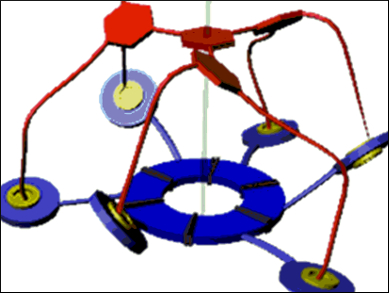Artificial supramolecular systems with potential applications in the fabrication of smart materials respond to external stimuli with changes in structure, configuration, and supramolecular interaction. In contrast, nature uses the conformational preferences of proteins to respond to stimuli with excellent accuracy, sensitivity, and reversibility. This principle has rarely been utilized in artificial stimuli-responsive systems.
In collaboration with Yuguo Ma of Peking University, Xin Zhao, Ren-Xiao Wang, Zhan-Ting Li and their colleagues at Shanghai Institute of Organic Chemistry, Chinese Academy of Sciences, have developed two chiral (A)6B-type supramolecular cages from hydrogen-bonded C6-symmetric zinc porphyrin hexamers and chiral C3-symmetric pyridyl hexadentate linkers with a 1,3,5-triphenylbenzene core. These cages exhibit unique temperature-dependent conformational preferences, which result in different conformational chirality at different temperatures.
The conformational preferences can be transferred and amplified in the whole supramolecular entity, revealing the temperature dependence of the conformational chirality bias. The principle of chirality transfer and amplification on the basis of conformational preference might open up a new route to smart materials with high sensitivity and excellent reversibility.
- Temperature-Responsive Chiral (A)6B Supramolecular Cages Based on Conformational Preferences,
Shi-Gui Chen, Zhi-Xiong Zhao, Xiao-Nan Jiang, Lu Wang, Tian-You Zhou, Cheng-Lu Lu, Xin Zhao, Xi-Kui Jiang, Yuguo Ma, Ren-Xiao Wang, Zhan-Ting Li,
Chem. Asian J. 2015.
DOI: 10.1002/asia.201501090




